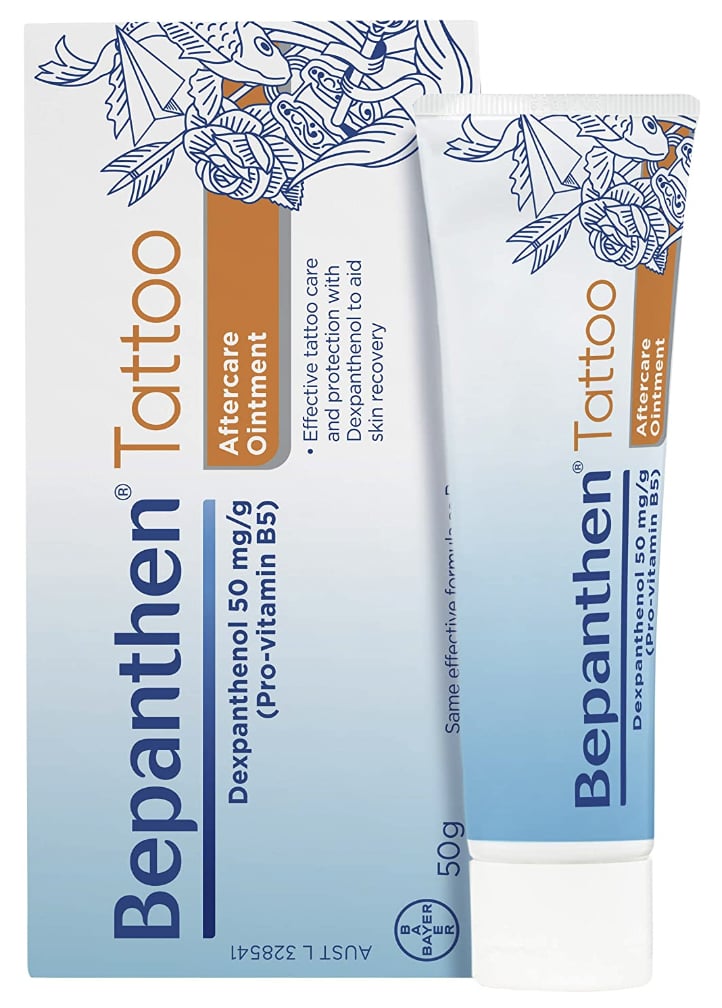The Ultimate Guide to Tattoo Aftercare


- Learn how to care for a tattoo before you book your appointment.
- This tattoo aftercare guide will explain all of the steps you need to know.
- On average, it takes about a month for a tattoo to completely heal.
Whether you’re skilled in the world of tattooing or are a complete novice, it’s good to immerse yourself in proper tattoo aftercare before each and every piece of ink you get etched onto your body. Regardless of whether you want to go for something dainty, like a fine-line tattoo, or skip straight ahead to getting your entire forearm done, caring for your skin is a requirement to ensure your new ink heals properly and looks great for years to come. Tattoos are considered to be open wounds and must be handled with care. With the proper treatment, they will heal in no time.
If you’re interested in getting inked and want to learn how to heal a tattoo, what the care process consists of, and the best tattoo aftercare products to use, keep reading to learn more from two tattoo artists and a board-certified dermatologist.
https://www.instagram.com/p/Cmf6Pz-rm7v/
How Long Does It Take For a Tattoo to Heal?
The tattoo healing process can differ greatly from person to person, depending on the size of the design, but according to California-based tattoo artist Saem Kim, around a month is standard. During this time, board-certified dermatologist Jessie Cheung, MD, explains that the skin will scab over. “You will have a fresh layer of new skin within one to two weeks, depending on the body location, but it’s important to remember that this skin is thin and prone to irritation and dryness,” she says.
Tattoo Aftercare Instructions
Typically, at the end of a tattoo appointment, the artist will gently place a bandage over the fresh design. If you’re wondering how long to keep a tattoo covered, it varies. “Depending on the artist and the tattoo the client received, the artist will usually recommend between three to six days to keep the bandage on,” says Kim. To get the exact answer, it’s best to consult with your tattooist. Tattoo artist Michelle Santana, who works at Bang Bang Tattoo in New York City, says that at first, “your tattoo will be a little red and irritated like any scratch would, and after a few days, it will scab a little and itch.”
Once you remove the bandage, you should use a combination of lukewarm water and unscented soap to clean the tattoo. It’s very important to take this process slowly and to be gentle so as to not irritate the sensitive skin.
After cleaning your new tattoo, you can pat the skin dry with a disposable towel or air-dry the area. According to Kim, air-drying is the best option to minimize your chances of transferring bacteria to the skin. For as long as the skin is scabbing over, Dr. Cheung explains you should keep it covered and moist with gentle products designed to heal the skin (more on that later). Stay clear of the sun for at least three or four weeks to avoid blistering and scarring, but ideally, you should always protect your tattoo from the sun with SPF — even after it’s healed. According to Kim, it’s best to avoid heavy exercise and sweating for up to a week post-appointment and possibly even longer if your piece is on the larger side. You’ll want to make sure you avoid touching it without first washing your hands in case you have any bacteria lurking on your fingers.
“Some of the biggest mistakes people make while healing tattoos is picking and scratching them,” Santana previously told POPSUGAR. “This can cause ink to come out of the skin, leaving negative space, which means you’ll require a touch-up.” For that same reason, you should also avoid jewelry and tight clothing that rubs the area, too.
https://www.instagram.com/p/Co-TQbZr9kx/
What to Put on a New Tattoo
For two to three weeks following your appointment, you should apply a thin veil of Aquaphor ($16, originally $22) to the skin and massage it using gentle, circular motions — repeat this process two to three times per day. Ointment-type products are recommended for post-tattoo care to protect the compromised skin. “Thin layers throughout the day are best and allow the tattoo to breathe,” Santana says.
One of Kim’s favorites is the Bepanthene Tattoo Intensive Care Ointment ($12). “I usually suggest clients purchase a travel-size container so they can moisturize throughout the day and not have to carry around a bulky bottle,” says Santana.
How to Care For Your Tattoo For Years to Come
Once your skin is completely healed, your job isn’t done just yet. Sunscreen will be your best friend. Just like you need to protect the skin on your face and body, this is especially true for your new tattoo. “Use sunscreen that has zinc oxide and titanium dioxide because our skin is always exposed to the sun,” Kim says. “It protects against both UVA and UVB rays, which are damaging to the skin.” This will make sure the ink in your tattoo stays vibrant and is less likely to fade over time.
If you really want to ensure your tattoo stays fresh and new looking, Kim recommends paying a visit to your tattooist every once in a while to get it retouched. Touch-ups can enhance the appearance of the tattoo in both color and clearness. Keeping up with your daily and annual tattoo maintenance will help your design stay looking good as new for years to come.
Source: Read Full Article

